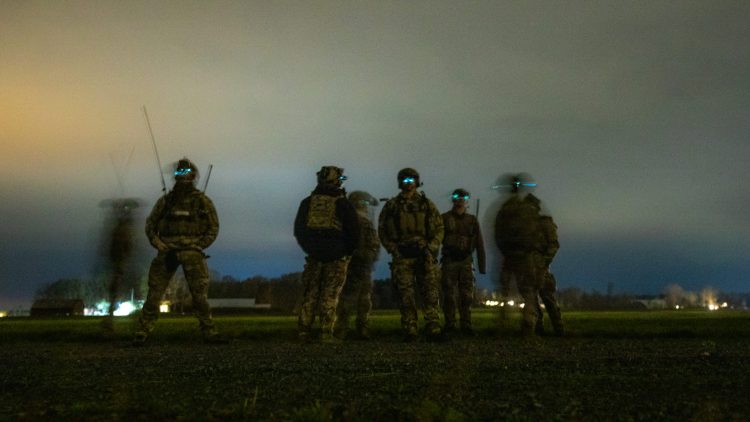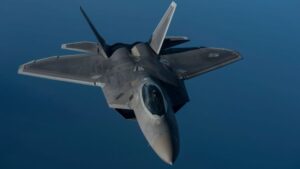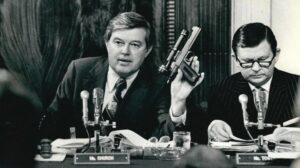The name Delta Force, also known as the 1st Special Forces Operational Detachment-Delta (1st SFOD-D), is synonymous with elite special operations within the United States Army.
Founded in 1977, Delta Force has gone by various names within the Joint Special Operations Command (JSOC) over the years, including Combat Applications Group (CAG), Army Compartmented Element (ACE), “The Unit,” and Task Force Green. Though organized administratively under the Army, JSOC controls Delta Force.
Delta Force specializes in counterterrorism, direct action, hostage rescue, and reconnaissance. It often tackles high-stakes, classified operations directed by the highest levels of the US government, underscoring the gravity of its work. This elite unit recruits primarily from the Special Forces and the 75th Ranger Regiment.
The Birth of Delta Force: A Response to Terrorism
In the 1970s, a series of high-profile terrorist incidents convinced the US government to establish a dedicated counterterrorism unit. Colonel Charlie Beckwith, a Special Forces veteran inspired by the British SAS (Special Air Service), championed the creation of such a force.
After years of lobbying and overcoming resistance, the Pentagon and top Army brass finally tasked Beckwith to head the unit. He and his team developed the “Robert Redford Paper,” a document outlining a four-phase selection and training process to justify the time needed to build a fully functional and formidable unit. The Special Forces veteran estimated it would take two years to complete.
Delta Force was officially established on November 19, 1977.
However, to bridge the gap until soldiers completed the rigorous selection process, Colonel Bob “Black Gloves” Mountel of the 5th Special Forces Group was tasked with setting up a temporary unit.
In 1978, Mountel selected volunteers and put them through a six-month course involving land navigation and rucking with heavy loads in rugged, mountainous environments. The purpose was to thoroughly test these candidates physically and mentally.
Delta Force was finally fully stood up in the fall of 1979, just in time for the Iran Hostage Crisis. This event, and the subsequent failed Operation Eagle Claw (1980), highlighted the need for further development of specialized units like the 160th Special Operations Aviation Regiment (SOAR), also known as The Night Stalkers and SEAL Team Six to support Delta Force and enhance its capabilities.
Two Delta Assault Teams during the Panama invasion, which took place in 1989 and 1990, resulted in the removal of dictator Manuel Noriega from power. (Image Courtesy of George E. Hand IV)
Delta Force: Organization and Structure
Inspired by the British SAS, Delta Force is similarly structured and focuses on small, highly skilled teams. The unit is headquartered at Fort Liberty, North Carolina, and estimates, as mentioned in Sean Naylor’s Not a Good Day to Die: The Untold Story of Operation Anaconda, suggest that around 1,000 soldiers are assigned, with 250-300 of those being the core “Operators.”
The general Delta Force operational structure is broken down into several squadrons:
Assault Squadrons (A, B, C, D): These four squadrons are the primary force for direct action and assault-style operations. Each squadron typically has three troops, two dedicated to direct action and one specializing in reconnaissance and surveillance, often involving deep penetration behind enemy lines. Sniper elements are also attached to the reconnaissance troops.
Aviation Squadron (E): This squadron provides dedicated air support for Delta Force operations.
Clandestine Squadron (G): Focuses on specialized and highly classified operations.
Combat Support Squadron: This squadron provides critical support functions like EOD, medical, intelligence, and logistics.
Additional elements include:
Computer Network Operations Squadron (CNOS): “The Digital Devils” specializes in cyber warfare and offensive computer network operations. They play a crucial role in gathering intelligence, disrupting enemy networks, and providing support for other Delta Force missions.
Combat Development Directory: This directorate focuses on research, development, and testing of new tactics, techniques, and equipment for Delta Force. They play a vital role in keeping the unit at the forefront of special operations capabilities.
Selection and Training: This group oversees the rigorous selection process and training pipeline for prospective Delta Force operators. They ensure only the most qualified and capable individuals join the unit.
This structure allows Delta Force to be highly adaptable and deploy specialized teams for a wide range of high-risk missions, from direct action and cyber warfare to intelligence gathering and strategic support.
The 75th Ranger Regiment during the 2015 Best Ranger Competition at Fort Benning. (Image source: DVIDS)
Delta Force Weapons: A Focus on Precision and Reliability
Delta Force operators are equipped with some of the most advanced and reliable weapons available. These weapons are chosen for their specific capabilities and adapted to meet the unique demands of the unit’s missions.
Pistols
Colt M1911A1 .45 caliber: For years, Delta Force operators utilized the iconic M1911, modifying it extensively to ensure near 100 percent reliability and performance in demanding operational environments.
Glock 19 9mm: More recently, operators have shifted to the Glock 19, known for its exceptional reliability, lightweight design, and user-friendliness.
Assault Rifles
HK 416: This highly customized rifle, developed in collaboration with Heckler and Koch, is a mainstay for Delta Force. Its short-stroke gas piston system and various barrel length options (10.4″, 14.5″, 16.5″, and 20″) provide versatility and adaptability for different mission scenarios.
These are just a few examples of the weapons used by Delta Force. The Unit constantly evaluates and adopts new technologies to ensure it remains at the forefront of special operations capabilities.
Samuel Booth Foster, a Delta Force legend. Sam is shown here in October 1993, kitting up for operations in Mogadishu, Somalia. Photo by Patrick A. McNamara
Joining Delta Force
Becoming a Delta Force operator is an exclusive and demanding process. Civilians cannot directly apply for the Unit. Instead, individuals must first enlist in the Army and meet specific requirements before even being considered.
These requirements include:
Rank: E-4 through E-8 (enlisted) or O-3 through O-4 (officer)
Age: 21 years old
Airborne qualification or willingness to volunteer for training
Score at least 110 on the Armed Services Vocational Aptitude Battery (ASVAB)
Ability to obtain a Secret security clearance
No record of disciplinary action
At least 2.5 years remaining in military service
While many Delta Force operators come from the Special Forces or the 75th Ranger Regiment, membership in this unit is not a prerequisite for applying.
Additionally, depending on their contract obligations and approvals, special operations members from other branches may be eligible to apply for Delta Force selection.
Delta Force Selection and Training: A Crucible of Excellence
Delta Force’s entire operation, including the training pipeline, is shrouded in secrecy. Eric Haney’s book Inside Delta Force provides valuable insight into Delta Force operator’s training and selection process.
Delta Force selection is known for its arduous land navigation and rucking evolutions. Only the most physically and mentally fit individuals with exceptional skills and unwavering determination can make it through.
The selection and training pipeline is designed to push candidates to their absolute limits and identify those who possess the unique qualities required for success in this elite unit.
Selection
The selection process is held twice yearly (late March to late April and late September to late October) at Camp Dawson, West Virginia; it is notoriously grueling, lasts for four weeks and consists of several phases:
Physical Fitness: Candidates undergo a series of rigorous physical tests, including endurance runs, obstacle courses, and swimming while carrying heavy loads.
Land Navigation: Mental toughness and navigational skills are tested through challenging land navigation exercises in diverse terrains and under various conditions. One of the most demanding tests involves an 18-mile, all-night land navigation course with a 40-pound ruck. As the candidates progress through selection, the weight of the rucks increases while the timeline to complete the land navigation courses decreases.
Combat Skills: Candidates demonstrate their proficiency in weapons handling, close-quarters combat, and tactical maneuvers.
Psychological Evaluation: Mental resilience and the ability to perform under extreme pressure are assessed through rigorous psychological evaluations.
Only a small percentage of candidates make it through this demanding selection process. Those who succeed move on to the next stage.
Operators Training Course
Operators Training Course (OTC), a grueling six-month crucible course, further refines the skills of the selected candidates and transforms them into Delta Force operators. It’s a relentless test of physical and mental fortitude, pushing candidates to their absolute limits and refining their skills to the highest degree.
The OTC is divided into six distinct training blocks, each with a specific focus:
1 | Marksmanship: This block emphasizes precision shooting with various firearms under diverse conditions. Operators learn advanced marksmanship techniques, weapon systems, and engagement tactics for close-quarters and long-range scenarios.
2 | Demolition and Breaching: This block focuses on the safe and effective use of explosives and breaching techniques. Operators learn to utilize explosives for door breaching, obstacle clearance, and other tactical applications.
3 | Combined Skills: This block integrates the previously learned skills into realistic scenarios. Operators participate in complex exercises that combine marksmanship, demolition, close-quarters combat, and tactical movement in simulated hostage rescue, direct action, and other operational settings.
4 | Tradecraft: This block delves into the world of intelligence gathering and analysis. Operators learn advanced techniques in surveillance, counterintelligence, and clandestine operations, preparing them to gather and interpret critical information for mission planning and execution.
5 | Executive Protection: This block focuses on the specialized skills required for protecting high-value individuals in dangerous environments. Operators learn advanced close protection tactics, threat assessment, and emergency response procedures.
6 | Culmination Exercise: This final block serves as a comprehensive assessment of the operators’ skills and abilities. It involves a complex, multi-day exercise that simulates a real-world mission, testing their teamwork, adaptability, and decision-making under pressure.
Throughout the OTC, the emphasis remains on teamwork, resilience, and the ability to operate effectively in high-stress situations. The training environment pushes individuals to their physical and mental limits, fostering a sense of camaraderie and trust within the team.
Upon successful completion of the OTC, the newly minted Delta Force operators are assigned to one of the unit’s active squadrons, ready to contribute their skills and expertise to the most critical and sensitive missions around the globe.
Delta Force Operators Pat McNamara (left) and Geo Hand (right) in flight suits.
Continuous Training
Even after completing the OTC, Delta Force operators always continue learning. They continuously train throughout their careers to maintain their peak physical and mental condition, refine their skills, and stay current with evolving tactics and technologies.
The Delta Force selection and training process is a grueling and transformative experience. It weeds out the weak and identifies only the most exceptional individuals who possess the physical, mental, and psychological attributes necessary to become part of this elite unit.
A History of High-Stakes Missions
Delta Force has a long and distinguished history of undertaking some of the most critical and dangerous missions in the United States’ fight against terrorism. Here are some of the most notable examples:
Early Operations
Operation Eagle Claw (1980): This failed attempt to rescue American hostages in Iran highlighted the need for a dedicated special operations aviation unit, leading to the creation of the 160th Special Operations Aviation Regiment (Night Stalkers).
Operation Urgent Fury (1983): A military invasion of Grenada, a small Caribbean island nation, aimed to overthrow a leftist government that had come to power through a violent coup.
Operation Just Cause (1989): Invasion of Panama with the primary objective of removing General Manuel Noriega, the country’s dictator, from power.
Persian Gulf War
Gulf War (1990-1991): A conflict sparked by Iraq’s invasion of Kuwait. Fearing Iraqi leader Saddam Hussein’s ambitions and potential control over vital oil reserves, a US-led coalition liberated Kuwait through a combination of airpower and a decisive ground offensive.
Black Hawk Down (1993): During the Battle of Mogadishu, Delta Force operators, along with Army Rangers and other special operations forces, were involved in a fierce firefight after two Black Hawk helicopters were shot down. This event, later depicted in the film “Black Hawk Down,” resulted in the deaths of five Delta Force operators, including Sergeant First Class Randy Shughart and Master Sergeant Gary Gordon, who were posthumously awarded the Medal of Honor for their heroism in securing a helicopter crash site.
Operation Gothic Serpent (1993): Part of the Battle of Mogadishu, taking place in Somalia, went awry when a mission to capture high-value targets led to a fierce firefight after two Black Hawk helicopters were shot down. Delta Force operators, alongside Army Rangers and other special operations troops, were embroiled in a brutal urban battle to rescue their comrades.
War in Afghanistan
Early Infiltration (2001): Delta Force operators were among the first boots on the ground in Afghanistan, working under JSOC command and attached to Task Force Sword. They conducted high-risk missions, including deep reconnaissance behind enemy lines, to gather intelligence and support operations against high-value targets.
Operation Red Dawn (2003): The mission to capture Saddam Hussein in 2003 wasn’t a flashy military operation but a culmination of months of intelligence gathering. Following the fall of his regime, Delta Force and other special operations troops, acting on actionable intel, raided two farmhouse locations near Tikrit.
Delta’s Jamie Reese (left) and Pete Blaber (right) in Panjshir Valley, Afghanistan during Operation Anaconda.
War in Iraq
Spearheading the Invasion: Delta Force played a crucial role in the early stages of the Iraq War, being the first to enter western Iraq and contributing significantly to the capture of the Haditha Dam. They also participated in the battles of Fallujah and Ramadi, making immense sacrifices. By 2009, operators had suffered a 20 percent casualty rate, and 50 percent of its operators deployed to Iraq had received Purple Hearts.
Recent Operations
The Benghazi attack (2012): In the wake of the deadly 2012 attack on the US consulate in Benghazi, Libya, Delta Force played a crucial role in securing American personnel. Though Operation Juniper Shield, focused on counter-terrorism efforts in North and West Africa, wasn’t the primary mission at hand, Delta Force’s unique capabilities were called upon. They deployed to Tripoli to evacuate the US embassy, demonstrating their adaptability and readiness to respond to unforeseen threats beyond their core area of operations.
The Capture of El Chapo (2016): Delta Force operators participated in Operation Black Swan, successfully capturing Joaquin “El Chapo” Guzman, the leader of the Sinaloa Cartel, in a raid in Mexico.
The Killing of Abu Bakr al-Baghdadi (2019): In a daring operation codenamed “Kayla Mueller,” Delta Force operators conducted a raid in Syria that resulted in the death of Abu Bakr al-Baghdadi, the leader of ISIS (Islamic State of Iraq and ash-Sham).
These examples provide a glimpse into the high-stakes missions undertaken by Delta Force in various theaters of operation. Their dedication, skill, and courage have made them a vital asset in the fight against terrorism and other threats to national security.
Closing Thoughts
Delta Force epitomizes the pinnacle of US military special operations with its rigorous selection process, advanced training, and critical role in national security. This elite unit continues to adapt and evolve, maintaining its status as a key asset in the United States’ strategic operations toolkit, ready to tackle the most challenging and sensitive missions around the globe.
—
Disclaimer: SOFREP utilizes AI for image generation and article research. Occasionally, it’s like handing a chimpanzee the keys to your liquor cabinet. It’s not always perfect and if a mistake is made, we own up to it full stop. In a world where information comes at us in tidal waves, it is an important tool that helps us sift through the brass for live rounds.



